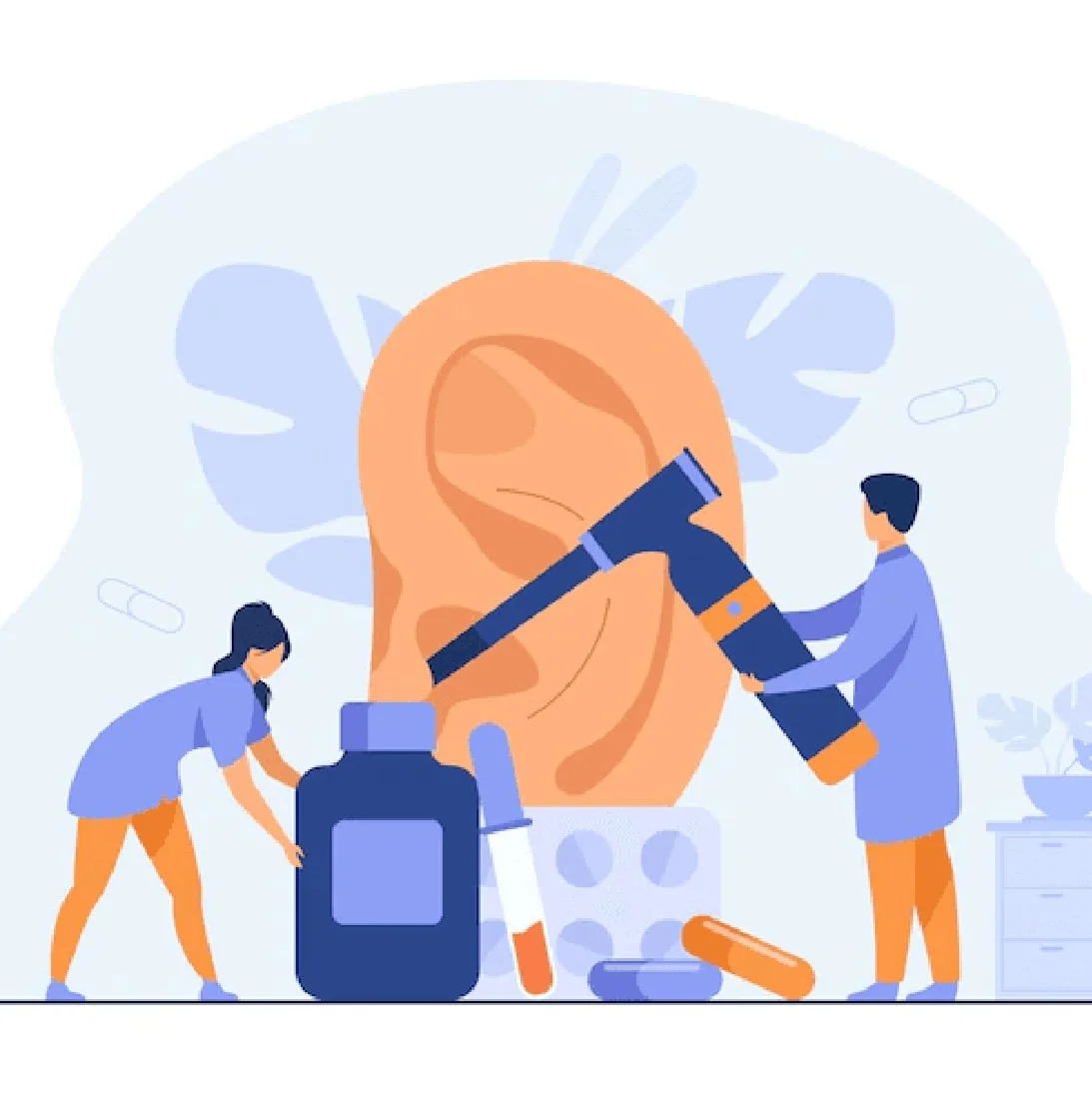
Department of Otorhinolaryngology (ent)
Welcome To Gangasheel Hospital
What is Ear Infection ?
The colloquial term "ear infection" is medically known as acute otitis media or sudden otitis media (the space behind the eardrum). Ear infections can affect anyone, both children and adults, but ear infections are one of the most common reasons young children visit a doctor. Ear infections often resolve on their own. Your doctor may recommend drugs to relieve pain. If your ear infection is getting worse or not getting better, your doctor may prescribe antibiotics. In children under 2 years of age, ear infections usually require antibiotics.
It's important to see a doctor to make sure the ear infection has cleared up or to see if you or your child have ongoing pain or discomfort. Persistent ear infections, frequent infections, and fluid buildup behind the eardrum can lead to hearing loss and other serious consequences.
Ear infections are caused by bacteria and viruses. Ear infections often start after a cold or other respiratory infection. Bacteria or viruses travel through the eustachian tubes (one in each ear) to the middle ear. This tube connects the middle ear to the back of the throat. Bacteria and viruses can also cause the ear canal to swell. This swelling can cause the tube to become blocked, which keeps normally produced fluids to build up in the middle ear instead of being able to be drained away.
Adding to the problem is that the eustachian tube is shorter and has less of a slope in children than in adults. This physical difference makes these tubes easier to become clogged and more difficult to drain. The trapped fluid can become infected by a virus or bacteria, causing pain.
Symptoms of ear infections include:
In infants too young to talk, watch for signs of pain such as ear rubbing or pulling, crying more than usual, sleep disturbances, and restless/irritable behavior. can be most noticeable during bottle feeding, especially during bottle feeding. When a child swallows, it changes pressure in the middle ear, increasing pain and reducing appetite.
- Irritability:
Any kind of persistent pain can cause irritability. - Lack of Sleep:
The pain may get worse when the child lies down due to increased pressure in the ear. - Fever:
Ear infections can cause temperatures from 38°C (100°F) to he 104°F. About 50% of children develop fever due to ear infections. - Otorrhea:
A yellow, brown, or white fluid that is not earwax may ooze from the ear. This may mean that the eardrum has ruptured (broken). - Deafness:
The bones in the middle ear are connected to nerves that send electrical signals (as sounds) to the brain. Fluid behind the eardrum slows the movement of these electrical signals through the bones of the inner ear.
Here are some ways to reduce the risk of ear infections for you or your child:
Don't smoke
Studies have shown that secondhand smoke increases the chance of ear infections. Don't let anyone smoke in your home or car, especially if you have children.
Controls allergies
The inflammation and mucus caused by an allergic reaction can block the ear canal, increasing the chance of an ear infection.
Prevents colds
Reduces colds in children in the first year of life. Do not share toys, food, cups or utensils. Wash your hands frequently. Most ear infections start with a cold. If possible, try to delay using large nurseries for the first year.
Breastfeed your baby
Breastfeed from 6 to 12 months of age. Antibodies in breast milk reduce the incidence of ear infections.
Upright Angle Bottle Feeding
Keep your baby upright (head higher than belly) when bottle feeding. Breastfeeding on your side can cause milk and other fluids to flow back up into your ear canal. Holding a baby's own bottle can also cause milk to leak into the middle ear. This problem is solved by weaning the baby from the bottle between 9 and 12 months of age.Pay attention to mouth breathing and snoring. Constant snoring and mouth breathing can be caused by large adenoids. These can contribute to ear infections. Evaluation by an otolaryngologist and surgery to remove the polyps (adenoidectomy) may be necessary.
Inoculations
Make sure your child's vaccinations are up to date. This includes an annual flu (flu) vaccination for children 6 months and older. Also, ask your doctor about pneumococcal, meningitis, and other vaccines. Preventing viral infections and other infections can help prevent ear infections.
Treatment of ear infections depends on age, severity of infection, type of infection (whether the infection is primary, ongoing, or recurrent), and whether fluid remains in the middle ear for a long time depends on
Your health care provider may recommend pain and fever medications for you or your child. If the ear infection is mild, depending on the child's age, the doctor may wait a few days to see if the infection goes away on its own before prescribing antibiotics.
Yes, Ear Infection treatment is available in Bareilly at Gangasheel Hospital by the team of expert ENT surgeon's in the city.
